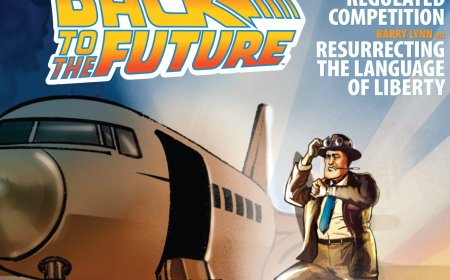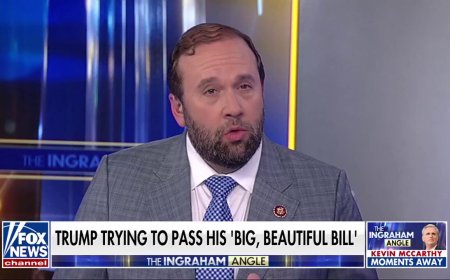The Corporate Raid on Campus


Like many incoming freshmen, Audrey arrived at Middlebury College without a clear plan for her future. “I knew pretty much nothing about finance,” she admitted. “I watched Succession.” But she was certain about one thing: securing a successful, well-paying career during college was nonnegotiable. After attending a high school with an “extreme amount of wealth” and now navigating a similarly privileged environment at Middlebury as a student on financial aid, she felt constantly reminded, “Shit, I need to make money.”
Although she had previously explored opportunities in public law—volunteering at a free legal center where she simplified legal documents to make them accessible for young people and interning at a court—at college it was hard to resist the pull of the finance recruiting machine. Jokingly dubbed the “Middlebury Mafia,” the school’s finance network is vast and the on-campus recruiting is intensive: newsletters, information sessions, networking breakfasts, and even curated trips to New York City, where students meet Middlebury finance alumni and get a taste of their world (parties included). “I signed up for all the career center materials, but finance was the only thing I saw,” Audrey told me.
As we sat at the campus café—the go-to spot for finance “coffee chats,” a thinly veiled audition where younger students feign interest in older ones, hoping for a future referral—Audrey explained that she had barely settled into Middlebury before feeling pressured to pick a path. Banks push for the earliest access to top talent, creating “an expectation that you go into your first semester and know exactly what you want to do.” And finance tells a compelling story: land an internship, perform well, and you’re set with a high-paying job and unmatched exit opportunities. So, with all her friends also getting involved, she decided to give it a shot, joining a student-run investment club, where she learned how to analyze a discounted cash flow and structure a leveraged buyout. Fast-forward a year, and Audrey’s now in the thick of recruiting season, hoping to land a coveted “bulge bracket” investment banking internship. (Because she doesn’t want to burn bridges with the big banks, she asked me not to use her real name.)
Walk through the library on any given afternoon and you’ll spot clusters of students in ill-fitting suits, hunched over laptops, anxiously preparing for coffee chats with finance alumni—hoping to make an internship-granting impression.
We at the Monthly have long raised alarms about the college-to-finance pipeline. Ezra Klein reported on the problem in 2012, and Amy Binder, the Johns Hopkins sociologist who has pioneered the study of career “funneling” into finance, warned in our pages in 2014 that corporate recruiters were making off with Harvard’s talent. Yet read those articles today and they feel almost quaint. Roughly one-fifth of students at highly selective universities now go into finance. The Wall Street Journal reported in December 2023 that the industry is beginning to recruit summer interns 18 months before they’re expected to start, in the first semester of sophomore year. Meanwhile Goldman Sachs announced that applications for its internships have increased sixfold over the past decade, with the bank only accepting .80 percent of those applicants—and a mere .33 percent of full-time job candidates. Students today are expected to join finance-related extracurriculars, build networks of hundreds of people, learn financial modeling, practice case studies, and prep for a series of technical and behavioral interviews. “It takes up more time than school,” Audrey confided. “It feels like if I’m doing schoolwork then I’m wasting time which should be recruiting focused.”
Some of this modern frenzy can be traced to student demand. The skyrocketing cost of elite college has forced many students to meticulously calculate the financial returns of their degrees. Housing prices in major cities are near all-time highs, pushing those who dream of living in glamorized metropolises toward the high-paying careers that make it possible. Finance, perceived as the most desirable and stable sector among 18-to-25-year-olds, has naturally become a focal point for competition. Beyond material pressures, there’s a deeper generational shift in how young people value money. The annual American Freshman Survey shows that a significant surge in students aspiring to become “very well off financially” occurred between the 1970s and ’80s. That trend has culminated, according to another survey, with Gen Z claiming they need nearly $600,000 to feel “successful”—about half a million more than older generations.
And yet, according to Binder, who has studied the finance pipeline at Harvard, the dominance of finance recruitment at elite universities isn’t just driven by economic or cultural factors. Instead, she identifies a phenomenon she calls “career funneling” as the real driving force. According to Binder, “student career aspirations are not simply the result of individual preferences but are heavily influenced by organizations and the actors inhabiting them.” Binder argues that finance firms leverage their clout with elite universities to create high-stakes “status tournaments,” where students—most of whom already spent their high school years fiercely competing to earn a spot at an elite university—come to see finance as the inevitable next rung on the overachievement ladder they’ve been climbing since childhood. Career funneling has long been a feature of elite universities, though the favored industries change over time. In the 1950s and ’60s, for instance, the most sought-after careers on elite campuses were at the State Department or the Central Intelligence Agency—non-remunerative fields that complicate the functionalist narrative between top wages and job seekers. To Binder, the real allure isn’t the work or even the lucrative salaries but the “halo effect” of having beaten out the competition, a continuation of the hypercompetitive ethos that defines elite institutions. Audrey agreed: “I’m a competitive person. This kind of seemed like the next big competition.”
The effect of this recruiting system is to channel students into a field for which they have little genuine interest or aptitude. A 2008 survey by The Harvard Crimson revealed that half of the university’s students planning to go into finance or management consulting—an industry with a nearly parallel trajectory—would choose a different career if financial concerns weren’t a factor.
While it may be hard to muster sympathy for these students—after all, a privileged yet unfulfilling life is hardly the worst fate—the broader societal implications are far more concerning. Leave aside the fact that the modern finance industry is a force that exacerbates inequality, stifles corporate innovation, and inflates systemic risk. The bottom line is that it is also among the best paths to accumulate wealth, and today entry to this exceedingly remunerative career is largely saved for students who already come from the wealthiest backgrounds. Brilliant and equally qualified students at less selective colleges are not cut in on the riches. That in itself is an outrage.
But the loss to society is greater still. When a disproportionate share of the wealthiest and most academically credentialed graduates flock to finance, other vital professions are left starved of the talent and prestige they desperately need. For instance, at Harvard, more students in 2020 entered finance than academia, the health industry, public service, or government combined—some of which face looming worker shortages.
Thanks to the financial recruiting funnel, a whole generation of America’s most competitive and expensively educated students are missing out on a vast range of personally fulfilling, societally useful, and reasonably remunerative jobs. Instead of becoming junior analysts at Goldman Sachs, students could be getting in on the ground floor of microchip companies that are building new plants under the 2022 CHIPS Act. They could address the climate crisis by working on the cutting edge of battery storage, geothermal, and distributed energy—or by becoming federal energy regulators and helping to pave the way for electric transmission lines for solar and wind. They could protect the environment at the Nature Conservancy or defend women’s rights at EMILYs List. They could join start-up firms trying to commercialize lab-grown meat. They could do their bit to help solve the housing crisis by finding employment at real estate firms that are turning empty downtown office buildings into residences and constructing apartments on commercial strips in the suburbs. They could seek jobs at one of the many for-profit and nonprofit health care organizations trying to transform primary care for the better. They could go to work for blue-state attorneys general who are bringing lawsuits against the Trump administration’s unconstitutional actions.
Instead, they are being herded like sheep into jobs that are likely to put money in their pockets but suck their souls dry.
Historically, those seeking to get rich didn’t gravitate toward finance. For many young people today, this seems surprising—the modern finance industry exudes an almost mythic inevitability, the sense that an industry centered around money would naturally generate vast wealth. But for much of American history, finance was a stable but ordinary middle-class profession, with finance workers only slightly better educated and paid than their peers. However, starting in the 1970s, fundamental changes in the economy—spiraling inequality, legal innovations granting financial firms greater control over corporate management, and lax government policy—paved the way for the industry’s meteoric rise. Today, finance is synonymous with the economic elite, producing 20 percent of all billionaires and employing 40 percent of Americans with assets exceeding $30 million.
As compensation on Wall Street exploded, the industry reorganized its internal corporate structure to better attract top students from brand-name universities. Kevin Roose, in his book Young Money, explains how banks ended their traditional recruitment practices in favor of a “two-and-out” program in which college seniors are hired for two-year stints as analysts before moving on, usually to find work at a hedge fund or private equity firm. The model proved enormously successful, attracting a wave of young talent eager to collect a hefty check and another résumé-boosting gold star, even if they didn’t aspire to lifelong careers in banking.
Goldman Sachs announced that applications for its internships have increased sixfold over the past decade, with the bank only accepting .80 percent of those applicants—and a mere .33 percent of full-time job candidates.
At Harvard, for instance, the percentage of men entering finance and consulting doubled between 1970 and 1990, peaking in 2007, when 58 percent of men pursued careers in those two fields. Today, as Matt Kuchar, Middlebury’s finance career adviser, told me, many students view finance like “grad school—you’re deferring any big career decisions until two years after graduation. And for a lot of students, that’s very comfortable.”
While students eventually adopt this mind-set, few enter college with it already in place. For example, Binder’s “career funneling” study found that only two out of 56 interviewees had even a basic understanding of finance, let alone plans to enter the field after college—and both of these students came from families with Wall Street connections. To bridge this gap, the industry employs a recruitment strategy described by Roose as “reminiscent of very polite stalking … These firms behave less like faceless corporate entities than like insecure middle schoolers.” While Roose focuses on the University of Pennsylvania’s Wharton School of Business—arguably the premier recruiting hub for financial firms—finance holds an outsized role across most elite institutions. At Middlebury, for example, finance and consulting compose nearly 20 percent of all events sponsored by the career center and 49 percent of information sessions. And formal events only scratch the surface. Walk through the library on any given afternoon and you’ll spot clusters of students in ill-fitting suits, hunched over laptops, anxiously preparing for coffee chats with finance alumni—hoping to make an internship-granting impression. With the industry seemingly omnipresent, students have (probably correctly) internalized the importance of constant contact. As Audrey put it, “If you don’t have a network, you’re not going to get a job. If you don’t have people within the bank advocating for you, there’s not even a point in submitting the application.” A recent email from Middlebury’s career center highlights the demands of finance recruiting, reminding interested students that “hopefully you’re well into your conversations with alumni and networking contacts at these firms” and shared feedback from alumni coffee chats, noting that “across the board, our alumni have reported that most Midd students have work to do.” Still, the email reassured them that more can still be done, as “it’s [only] preseason.”
Entry to the exceedingly
remunerative career of finance is largely reserved for students
from elite colleges who already come from the wealthiest backgrounds. Brilliant and equally qualified students at less selective colleges are not cut in on the riches. That in itself is an outrage.
The industry also understands the importance of capturing students’ attention early, bombarding them with advertising and manufacturing a sense of urgency that overshadows alternative career paths. A typical career center email invites “first-years or sophomores interested in learning more about careers in finance” to “join Midd Alumni for an Investment Banking 101 presentation and networking session.” When I spoke with Kuchar, he explained that the accelerated timeline “is probably the biggest challenge that our students have, and it’s the area where this industry is most susceptible to critique. It is insanely early to be recruiting people in January of their sophomore years.” In addition to a crowding-out effect, this practice also fails to ensure that Wall Street draws from a truly richer talent pool. Students from lower-income backgrounds are particularly disadvantaged, as they often lack early exposure to the industry and may only learn about the process when it’s already too late to catch up. This dynamic may help explain a finding from Opportunity Insights, a Harvard-affiliated research group, which shows that among Ivy League students, the higher their parents’ income, the more likely they are to enter finance, consulting, or tech—and the less likely they are to pursue nonprofit or public-sector work.
Another clever approach financial firms have taken is to restructure recruitment to resemble the college admissions process. Like applying to top universities, students vie for positions at a handful of elite firms through a highly competitive and formalized application process, complete with rigorous interviews, networking requirements, and carefully timed recruitment seasons that dominate the academic calendar. This sense of structure particularly appeals to a type of student who has spent their whole life anxiously striving toward the next goal without always knowing why. For many, college—especially at an elite institution—is the final destination, the achievement that promises a secure future. Yet as Binder observed in her interviews, this confidence often gives way to an “almost existential angst” when students face the uncertainty of life after graduation. It’s a striking irony that despite Wall Street’s reputation for risk-taking, its ranks have swelled most by appealing to students who are often the most risk averse and career confused.
Hovering over much of this is the fact that, at many universities—though not Middlebury—the recruiting process operates on a pay-to-play model, where access is determined by financial contributions from employers. In a separate study from her career funneling research, Binder documented the rise of “corporate partnership programs,” which grant companies direct access to students for an annual fee. Looking at members of the Association of American Universities—a group of elite schools with members like Duke, Yale, and MIT—she found that roughly 55 percent of schools had such programs. She writes that CPPs subvert the traditional career center missions of providing counseling and job search skills to students and instead “attempt to directly deliver students to a small portfolio of companies willing to pay rents to the career center.” Even schools without formal partnerships offer perks like “platinum partnerships,” which grant firms access to interview rooms, premium slots at career firms, sponsored recruitment campaigns, and other special privileges. Some schools simply charge employers directly. Harvard’s career services offices, for instance, charge $800 for for-profit employers to participate in career fairs, $50 for each 60-day job posting on its “Crimson Careers” platform, $100 for each on-campus job posting, $150 per interview room, $300 for conference room usage, and an additional $300 fee minimum for use before or after scheduled interviews. The result, Binder writes, is that “a very small group of extremely well-resourced companies … gain outsized influence on the cognitive landscape of elite college students.”
Some young people are beginning to push back against the status quo. Ryan Cieslikowski, a former Stanford student with a background in community organizing, is one such example. As a freshman, he was “sold by this vision of taking a bunch of bright students from diverse backgrounds and trying to make the world a better place,” only to find it “naive” once on campus. He wrote an award-winning master’s thesis on career funneling and then cofounded Class Action, a grassroots organization dedicated to combating career funneling and legacy admissions.
Cieslikowski believes that the first step is addressing who steps onto elite college campuses in the first place. At the 91 most competitive colleges, 72 percent of students come from the top quarter of the income distribution and only 3 percent come from the bottom quarter. Regrettably, 38 of the most elite colleges have more students from the top 1 percent than the bottom 60 percent. As Cieslikowski put it, “When you have a campus that is so saturated with wealth, certain types of jobs become the culture, the expectation. It’s what you’ve grown up with, and it’s what the natural next step is,” a view reinforced by Opportunity Insights’ findings. Reform is unlikely to come from within, which is why the Yale Law School professor Daniel Markovits proposes stripping universities of their tax-exempt status until they ensure that at least half of their students come from families in the bottom two-thirds of the income distribution.
When it comes to the recruiting process, universities should reconsider their stance on institutional neutrality. Unsurprisingly, they reject the idea that they funnel students into certain industries, instead placing the onus on the students: “There’s a herding effect where students vote with their feet,” Kuchar explained. “We can run seven sessions a week for Teach for America, but we might have seven people show up. When it’s Morgan Stanley, 120 show up.” Despite this reality, most colleges maintain that they should neither favor nor oppose the vast majority of industries, because as Kuchar explained, “all industries come fraught with ethical concerns,” and reasonable people will disagree about which professions are good or bad. The prevailing belief is that universities should focus on providing students with a strong moral foundation, enabling them to act ethically regardless of their chosen career path—a principle reminiscent of the educational mantra to teach students how to think, not what to think. Consequently, universities avoid challenging the practices or narratives of certain industries. Kuchar, for instance, voiced concern that such efforts could lead to a restrictive environment where students would feel dissuaded from joining an industry that “needs people who can look at complex, ethically charged situations and build consensus.”
A 2008 survey by The Harvard Crimson revealed that half of
students planning to go into finance or management consulting—an industry with a nearly parallel trajectory—would choose a different career if financial concerns weren’t a factor.
Neutrality, at least as universities define it, is a flawed concept—and one they don’t even consistently uphold. In reality, their actions often resemble promotion rather than impartiality. Take Middlebury, for example, which offers students free access to a third-party informational packet that frames the “worst-case scenario” of working in finance as: “you get a bit run-down, you learn a handful of transferable skills, and maybe you get paid a little bit along the way. Regardless, this industry will open doors others can’t, so doing it for a small amount of time is better than nothing.” Of course, a genuine “worst-case scenario” resembles something more like the tragic death of Leo Lukenas III, a Green Beret turned Bank of America associate who passed away at just 35 after working more than 100 hours a week for nearly a month. Meanwhile, another packet provided by Middlebury encourages students to “show that you understand and accept (relish, even) the physical and mental demands this job entails.”
More broadly, universities must confront the reality that their campuses have become the crucible where students with little initial interest or knowledge of finance transform into a student body where, in some cases, as many as 70 percent of seniors apply for jobs in Wall Street or consulting firms. Even if universities are truly neutral parties, the dynamics of an unfettered talent recruitment market on college campuses—where industries with significant resource disparities compete—have led to a clear market failure. Middlebury already tacitly acknowledges this reality through practices such as refraining from allocating funds to promote finance-related programming or using some of the career center’s budget to bring alumni from lesser-known industries to campus. But these measures, while helpful, are insufficient.
Among Ivy League students, the higher their parents’ income, the more likely they are to enter finance, consulting, or tech—and the less likely they are to pursue nonprofit or public-sector work.
An easy next step would be for universities to warn students of concerns surrounding funneling. Cieslikowski suggests that if universities were up-front with students early on—saying, “This is how career culture plays out here; prepare to be funneled”—it would empower them to navigate the process more intentionally. Beyond transparency, universities with pay-to-play recruiting models and corporate partnerships should abolish these practices entirely. Career centers should not function as auction houses, selling access to students to the highest bidder. Or, schools that continue generating revenue from recruiting visits should replace special perks with taxes on overrepresented industries, redirecting those funds to support access for less affluent sectors that cannot afford extravagant recruiting efforts.
The success of Teach for America highlights how campus prestige and access can trump compensation for elite college graduates. In 2010, universities like Yale, Dartmouth, and Duke all reported that TFA hires more seniors than any other employer, although that number has shrunk substantially since TFA came under criticism over its high turnover rate. Creating a better-functioning talent recruitment market requires not only boosting the campus presence of less visible industries but also curbing the dominance of the most visible ones. Universities have the power to collectively prohibit the industry from recruiting freshmen and sophomores and to limit on-campus visits to no more than once or twice a year. Exposing students so early and incessantly in their college careers serves no meaningful purpose and only limits their ability to explore and develop other interests.
Beyond that, universities have been negligent in instantiating any career training into the curriculum itself. Twelve years ago, Ezra Klein wrote in the Monthly, “Universities have been looking at the problem backward … My hunch is that we have underemphasized the need to learn skills, rather than simply learn, while in college.” Seemingly little has changed today. Universities should make career planning a formal part of the curriculum, a required course equivalent with classes like English or math. While career preparation shouldn’t overshadow the broader intellectual mission of higher education, ignoring it entirely pushes students straight into Wall Street’s hands. Something as simple as a mandatory career exploration track—introducing students to a wide variety of fields, providing opportunities to shadow professionals, and featuring guest speakers—could prove helpful. Perhaps the Ivy League could take a lesson from their under-appreciated counterparts—the regional public universities. These institutions take a proactive approach to career development, like Grand Valley State University’s Laker Accelerated Talent Link—a program that provides students with $15,000 in scholarship money, a career-focused curriculum, and a paid internship with a local company. Rather than outsourcing career development to the whims of the market, programs like these offer a structured, community-oriented alternative.
Even if universities can’t formalize career planning, universities should work to destigmatize it by fostering a culture where thinking about one’s future is seen as both healthy and expected. The pervasive attitude among students—and sometimes even professors—that pro-active career planning equates to “selling out” discourages meaningful exploration of professional goals. By promoting the idea that preparing for the future is a natural and valuable part of personal growth, schools can encourage students to pursue a range of opportunities, decoupling career planning from defaulting to finance.
Part of the university’s culture should also involve fostering more nuanced discussions about the ethical implications of various career paths. One example is Cambridge, where the career center pushes back against the finance industry’s dominance. It sends emails telling students, “If you don’t want to become a banker, you’re not a failure,” and even hosts an event titled “But I Don’t Want to Work in the City” (referring to London’s financial district). When I asked Audrey if people ever discussed the ethical implications of a career in finance while recruiting, she laughed and said, “Nobody ever talks about the moral side of it. Nobody talks about that.” In research for Cieslikowski’s thesis, he discovered that while students acknowledged that many others are sellouts, they rationalize their own decisions by drawing personal “moral boundaries” that differentiate them from “actual” sellouts. For example, they might argue that their decision to work in finance is unique because they intend to leave after a few years, donate a portion of their earnings to charity, or use the skills they gain to eventually transition into a socially impactful career. University career centers are little help, focusing mostly on individual decisions in a way that similarly allows students to avoid weighing the wider societal consequences of their choices. Without these open and honest conversations, students either avoid critical reflection altogether or construct romanticized narratives about the nature and impact of the industries they aspire to join.
Of course, most measures would work best if implemented collectively. A lone school going rogue risks alienating these powerful industries, which can simply shift their recruitment efforts to more compliant institutions. Fortunately, there are signs of a growing movement. Class Action recently held its inaugural conference at Brown University, a three-day event in which attendees and organizers from eighteen different institutions—most of which heavily feed into Wall Street pipelines—met to discuss strategy and build connections. While activists have led the charge to end legacy admissions—ranging from student governments passing anti-legacy resolutions to lobbying and testifying for legislative bans, culminating in California’s successful prohibition last year—there is also growing momentum to push back against the dominance of corporate career funneling. For instance, Mason Quintero, another Class Action board member, played a key role in a 2022 Amherst initiative that secured a $400,000 annual grant for alternative career programming. This funding enabled Amherst’s first Social Impact Career Fair and broadened the Trek Program, which provides students with multiday trips to gain behind-the-scenes insights into specific industries. Thanks to these efforts, the program now features compelling alternatives to the traditional Wall Street and Silicon Valley tracks, including a sustainability-focused trip to Boston and a “government and nonprofits” trip to Washington, D.C.
Thanks to the financial recruiting funnel, a whole generation of America’s most competitive and expensively educated students are missing out on a vast range of personally fulfilling, societally useful, and reasonably remunerative jobs.
Cieslikowski hopes to build on that success, by “bringing the Amherst model to other schools.” Currently, Class Action is working with the Johns Hopkins SNF Agora Institute—an academic forum dedicated to strengthening global democracy—on developing a white paper analyzing career funneling and outlining concrete reforms. “Universities profess neutrality, but if they just conceive of their purpose as being an intermediatory in the supply and demand of careers, that’s not a conception of neutrality that’s helpful for students,” Cieslikowski argues. “Because then you’re going to wind up with a narrow band of wealthy and resourced firms recruiting all your students.” Instead, he wants universities to recommit to their mission statements—helping students define their own paths and preparing the next generation of leaders.
Of course, it’s pretty difficult to monetize learning to live more freely and fully as yourself. At a time when 58 percent of college students cite work outcomes as their primary motivation for attending college, many argue that elite education’s value proposition should shift away from humanistic ideals toward a more pragmatic approach. Phrases like “acquire human capital,” “preserve optionality,” and “optimize for future earnings” dominate campus discourse. Or, as Audrey put it more bluntly, “If people want to make money, people want to make money, and I don’t think that’s so bad.” It’s understandable that students may internalize that message, but universities shouldn’t. In a society where nearly everything is up for sale, elite universities should stand apart—one of the few institutions that don’t have to operate like profit-maximizing firms kneeling before the logic of the market. Education should cultivate curiosity, critical thinking, and public service, not simply serve as pipelines to the highest-paying jobs. In order to do that, one thing is clear: It’s time to end Wall Street’s hostile takeover.
The post The Corporate Raid on Campus appeared first on Washington Monthly.










































